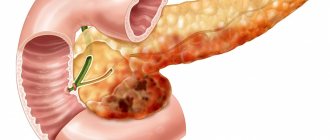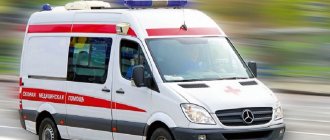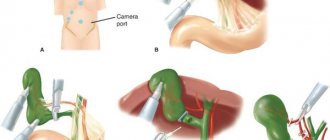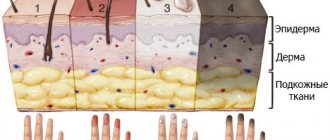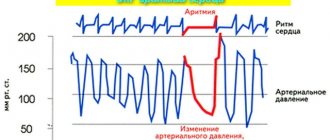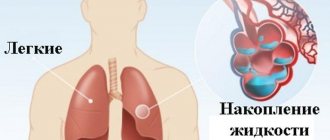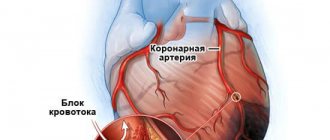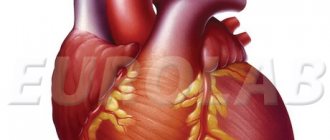Recognizing the first signs of a heart attack can be difficult due to their similarity to other heart diseases (angina pectoris, acute heart failure).
A heart attack can occur suddenly and at any age. However, doctors say that men over 45 and women over 55 are at greater risk. In this age group, smoking and obesity increase the likelihood of heart muscle blockage. Also, the cause of the development of pathology can be a sedentary lifestyle and untreated chronic diseases.
What is a heart attack?
A heart attack is a pathological condition in which the heart muscle is blocked by a spasm or blood clot, resulting in disruption of blood supply. Heart attack and heart attack are the same thing.
How to recognize a heart attack by its signs? The attack can be painless or with characteristic severe symptoms, which include:
- mild, moderate or severe (unbearable) pain in the chest area, often radiating to other parts of the body;
- feeling of panic, fear, melancholy, anxiety, inexplicable restlessness;
- pain in the neck, lower and upper extremities;
- nausea, vomiting;
- dizziness, headache;
- breathing problems;
- loss of consciousness.
Most heart attacks involve discomfort in the center of the chest that lasts more than a few minutes. Unpleasant sensations can cause a feeling of tightness or pressure, and can also be accompanied by pain of a cutting, piercing, aching or stabbing nature. If there is no one nearby who can provide first aid until the ambulance arrives, it is necessary to provide self-help for a heart attack. Don’t panic, take a sitting or lying position, try to control your breathing, and if possible, provide access to fresh air (open a window, door). Changing the position does not relieve pain; try not to make unnecessary movements.
Symptoms suggestive of non-cardiac causes
You should not try taking heart medications if you have the following symptoms:
- the pain is short-term, stabbing, goes away on its own;
- intensifies with deep breathing, movement of the torso, arms;
- there is pain when pressing along the lower edge of the costal arch;
- At the same time, heartburn, belching, and a tendency to loose stools occur;
- constant aching pain that does not depend on physical activity.
With such symptoms, there is more evidence to suggest osteochondrosis of the thoracic spine, intercostal neuralgia, chest injury, stomach problems, and cardioneurosis.
Why do many people not feel the symptoms of a heart attack?
Symptoms of a heart attack may go unnoticed and do not always include chest pain, shortness of breath, and fear. Some people say that during this time they experienced sensations similar to an upset stomach and other symptoms of ill health (pain in the neck or shoulder, difficulty breathing, weakness, dizziness). In these cases, the diagnosis was confirmed only after a comprehensive examination of the patient.
First aid for heart failure should be provided to a person immediately after the onset of alarm signals:
- intense pain in the chest area;
- discomfort;
- sudden shortness of breath;
- weaknesses;
- feeling of squeezing.
The American Heart Association (AHA) lists cold sweats, nausea, and dizziness as additional signs of an attack. Some heart attacks are sudden and intense. But most start slowly, usually with mild pain or discomfort. Listen to your body and call an ambulance immediately if you feel unwell, especially along with pain in the heart area.
Tests and diagnostics
If you have had or are suspected of having a heart attack, your diagnosis is most often made by emergency physicians. You will be asked to describe your symptoms and your blood pressure, pulse and temperature will be taken. You will be connected to a monitor and will immediately begin to diagnose your myocardial infarction.
Healthcare professionals will listen to your heart and lungs with a stethoscope. You will be asked about your medical history and your family history of heart disease. A subsequent cardiac examination will help determine what is causing the pain.
Examinations include:
- Electrocardiogram (ECG). This is the first test that is performed to diagnose myocardial infarction. It is carried out while you are being asked about the symptoms of the disease. This test records the electrical activity of the heart using electrodes attached to the skin. Electrical impulses are recorded as a waveform and recorded on a monitor or paper. Since myocardium damaged by a heart attack does not conduct electrical impulses in the normal way, an ECG will show that a myocardial infarction has occurred or is progressing.
- Blood analysis. If myocardial infarction develops, the content of cardiac enzymes in the blood increases. Emergency room doctors will take blood samples from you to check for these enzymes.
How to diagnose heart problems?
Heart problems are diagnosed by rare, periodically or constantly recurring unpleasant sensations that occur in the heart area. They are often accompanied by accompanying signs of poor health: lethargy, weakness, headache, lack of air, rapid pulse, swelling in different parts of the body. Taken together, this may indicate markers of many diseases of the cardiovascular system. According to the World Health Organization, more than 80% of deaths occur due to the development of cardiovascular diseases in men and women.
If at least two or three symptoms occur over a certain period of time, you must contact a therapist or cardiologist to determine the cause. First of all, people who are at risk should seek medical help: these include those who have been diagnosed with problems with blood vessels, weight, metabolism, and also with the respiratory system.
Often myocardial infarction and other heart diseases are associated with a person’s delay in seeing a doctor due to the repetition of the same symptoms, which periodically disappear. Unhealthy lifestyle and bad habits increase your risk of heart problems, especially heart attack. For example, smokers are more susceptible to types of heart attacks than people who do not smoke.
Medications
- Aspirin. You will receive aspirin from emergency personnel or upon arrival at a medical facility. Aspirin reduces blood clotting and helps maintain blood flow through a narrowed vessel.
- Other antiplatelet drugs. The emergency room doctor may give you other drugs that work similar to aspirin and prevent blood clots. These are clopidogrel (Plavix), ticagrelor (Brilinta) and other drugs - platelet aggregation inhibitors.
- Thrombolytics. These drugs, also called “clot killers,” are widely used in the treatment of cardiac ischemia. They help dissolve blood clots that block blood flow in the coronary arteries. The earlier treatment with thrombolytics is started during myocardial infarction, the greater the chance of survival and the smaller the area of damaged myocardium.
- Other drugs that thin the blood. These include heparin, which makes the blood less “viscous” and less capable of dangerous blood clots. Heparin is given intravenously or subcutaneously in the first few days after myocardial infarction.
- Medicines that relieve pain. If you experience severe chest pain, you will be prescribed painkillers such as morphine. This will reduce the unpleasant symptoms of vascular diseases.
- Beta blockers. These drugs help relax the heart muscle, slow the heart rate, and lower blood pressure, making it easier for the heart to pump. Beta blockers limit damage to the heart and prevent future heart attacks.
- Nitroglycerine. The drug is used to treat angina pectoris. It temporarily widens the arteries, improving blood flow to and from the heart.
- Cholesterol-lowering drugs. These are statins, niacin, fibrates and bile acid sequestrants. They help lower levels of unwanted blood cholesterol and are useful soon after a heart attack to improve survival.
Why might doctors miss the first symptoms of a heart attack?
Doctors cannot miss the first symptoms of a heart attack. Ignoring poor health and refusing to visit a doctor can lead to complications or death, especially when a person has chronic diseases.
The causes of a heart attack can vary. It is often caused by the simultaneous action of several factors (alcoholism, stress, autoimmune disorders, thyroid pathologies, hereditary diseases).
Surgical methods
In addition to drug therapy, the following procedures are offered for effective treatment of myocardial infarction:
- Coronary angioplasty and stenting;
An emergency angioplasty procedure aims to open a blocked artery, allowing blood to flow freely to the myocardium. The doctor will insert a special long, thin tube (catheter) into the blocked coronary artery through an artery in the leg in the groin area or in the arm in the wrist area. Through this catheter, a special guide and balloon are brought to the affected area of the artery.
The balloon is guided through a guidewire to the affected area of the artery and inflated, facilitating the opening of the vessel. After this, a metal stent is implanted into this section of the artery - it will maintain the artery in a straightened state for a long time. It is better to implant a stent with a drug coating, which prevents restenosis - repeated narrowing of the vessel in this area. Read more about the benefits of balloon angioplasty here.
- Coronary bypass surgery;
In difficult cases, cardiac surgeons perform emergency coronary bypass surgery during a myocardial infarction. Coronary bypass surgery involves suturing a vein or artery to a coronary artery in a place after blockage or narrowing of the latter, thus restoring blood flow through the vessel.
Does the heart recover after a heart attack?
After a heart attack, it is possible to normalize the functioning of the heart, but it is impossible to restore cells that have lost their functionality. This also applies to cases where a person is provided with timely first aid for a heart attack. However, scientists talk about the possibility of restoring dead heart tissue using regenerative medicine. They plan to achieve this thanks to stem cells that are injected into the heart area, through which the process of regeneration of damaged cardiac tissue can be started.
There are two types of complications that can occur after a heart attack: those that occur almost immediately and those that occur afterward (in the following days, a week, or even a month later).
Complications that occur immediately after a heart attack include:
- arrhythmia - the heart beats irregularly, too fast or too slow;
- cardiogenic shock - a person’s blood pressure suddenly drops, as a result of which the heart cannot supply the body with enough blood to function properly;
- hypoxemia - oxygen levels in the blood become too low;
- pulmonary edema—fluid accumulates in and around the lungs;
- deep vein thrombosis - blood clots form in the deep veins of the legs and pelvis, which either block or interrupt blood flow in the vein;
- myocardial rupture - a heart attack damages the heart wall, causing it to rupture.
- Ventricular aneurysm - the ventricle forms a bulge.
Complications that occur after a heart attack include:
- aneurysm—scar tissue accumulates on the damaged heart wall, leading to blood clots, low blood pressure, and abnormal heart rhythms.
- angina pectoris - not enough oxygen reaches the heart, which causes chest pain;
- congestive heart failure - the heart may beat very weakly, causing the person to feel exhausted and experience shortness of breath;
- swelling - fluid begins to accumulate in the ankle area;
- loss of erectile function, loss of libido;
- pericarditis is an inflammation of the lining of the heart that causes severe chest pain.
Additional Research
If you have a heart attack, your cardiologist will begin immediate treatment efforts. Additional research:
- X-ray examination of the chest organs. A chest x-ray will help the doctor evaluate the size of your heart and the vascular pattern of your lungs and the presence of fluid in the pleural cavity.
- Echocardiography. This test is based on the emission and recording of reflected sound waves that create an image of the heart on a monitor. Echocardiography helps visualize the part of the myocardium that is damaged as a result of a heart attack and is not able to normally push blood through the vessels.
- Coronary angiography (catheterization of the coronary arteries). This type of coronary exam will show narrowing or blockage in the arteries that supply blood to the heart (coronary arteries). A liquid X-ray contrast agent fills the arteries supplying blood to the heart through a long, thin catheter. It is at the mouth of the coronary arteries through the femoral artery (in the groin area) or the radial artery (in the wrist area). When the arteries are filled with contrast, they become visible under X-ray guidance, revealing narrowing of the lumen and its complete blockage. In addition, since the artery is accessible, the doctor can treat coronary artery disease by performing coronary angioplasty and coronary artery stenting. During angioplasty, thin balloons are used that are delivered to the site of narrowing of the artery and inflated, expanding the lumen. In most cases, a mesh tube called a stent is then placed in this area of the artery. It keeps the artery open and prevents re-stenosis of the vessel lumen in the future.
- Stress test with load. Several days or weeks after your heart attack, you may be given a stress test. A stress test diagnoses how your heart and blood vessels respond to stress. You will walk on a treadmill or pedal a bicycle ergometer while an ECG or ECHO is recorded. If the patient is not ready for exercise, he is prescribed medications that stimulate the heart. A stress test will help your doctor determine the best treatment option. If your doctor wants to see an image of your heart during exercise, he will order a myocardial scintigraphy, a test similar to an exercise stress test that uses a special radiopharmaceutical and special imaging techniques.
- Coronary computed tomography (CT) or magnetic resonance imaging (MRI). This test is used to diagnose heart disease, including damage due to myocardial infarction. During a CT scan, you will lie on a table inside a tunnel-like machine. An X-ray machine rotates in this tunnel, recording and creating a series of images of your heart and chest organs. During this test, a radiopaque contrast agent is sometimes injected to visualize the coronary arteries. During an MRI, the patient lies on a table inside a similar tube-like machine that creates a magnetic field. The magnetic field arranges the atoms of cells in a certain way, and the device registers radio waves as a result of this rearrangement, depending on the type of tissue. These signals are processed and create an image of the heart.
Is all chest pain a heart attack?
Not all chest pain is a symptom of a heart attack. Sometimes during a heart attack, people may experience pain in the neck, shoulders, abdomen, or back. However, such pain can also indicate diseases of the musculoskeletal system or digestive system.
How to identify pain in the heart? It is necessary to assess their nature, frequency and location. If you have frequently recurring pain, you should definitely visit a cardiologist to establish a diagnosis (spasm of the heart muscle, tachycardia, myocarditis).
Definition:
A heart attack is a condition that poses a serious threat to human life and health. A heart attack, also called a myocardial infarction, can be a fatal event. According to statistics, heart attacks are the most common cause of death and disability among the population in developed countries. A heart attack occurs when a blood clot blocks blood flow in a coronary artery (the vessel that supplies blood to the heart muscle). Interrupted blood flow to the heart can lead to damage and death of the heart muscle.
